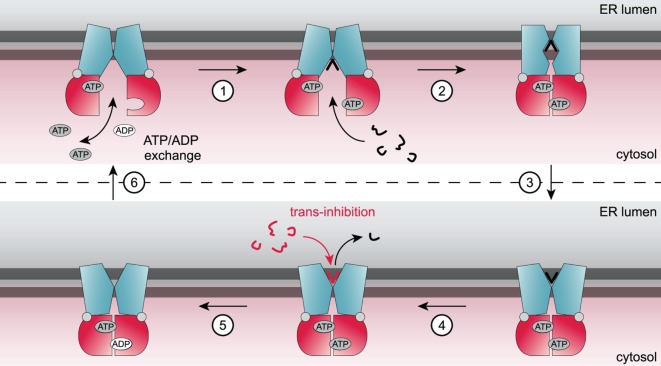Figure 2.
Current model of the translocation cycle of peptides by transporter associated with antigen processing (TAP). Under physiological conditions, TAP is loaded with ATP in an inward-facing conformation. Binding of a peptide (step 1) induces a conformational rearrangement of the TAP complex and subsequently nucleotide-binding domain dimerization. Presumably, an occluded state is formed (step 2) followed by a switch to an outward-facing conformation triggering peptide translocation across the membrane (step 3) and subsequent release of the peptide into the endoplasmic reticulum (ER) lumen (step 4). ATP hydrolysis (step 5) resets the TAP complex back in its resting state and ADP is exchanged against ATP (step 6). At high ER-lumenal peptide concentrations (16 µM), TAP is blocked by trans-inhibition.

